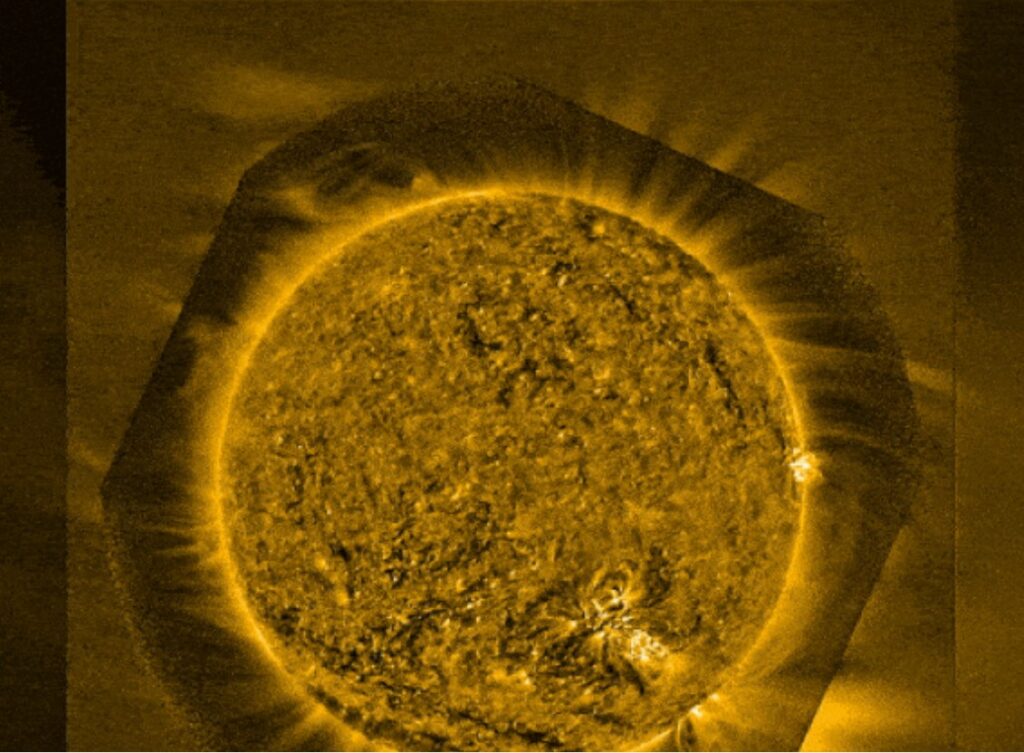New findings about the Sun’s magnetic field helps to predict solar storms

Composite video image from NASA’s Solar Dynamics Observatory and NOAA’s Geostationary Operational Environmental Satellite – R Series Solar Ultraviolet Imager instrument shows small-scale jetlet activity at the base of the solar corona, or the Sun’s upper atmosphere, and its extension to higher altitudes. This can be seen in the wavy structures emanating from the surface of the Sun. The observations were made over the course of approximately 10 hours on April 28, 2021.
Credits: NASA/SDO/GOES-R
A new scientific finding addresses a 400-year-old mystery, one that was once explored by Galileo. The new model contradicts previous theories that the Sun’s magnetic field originates deep inside its interior (with estimates of 130,000 miles being common). The long-standing ‘deep origin theories’ could not explain rotation patterns of the Sun’s gas near its surface or how Sunspots follow patterns of magnetic activity.
Instead, the model, produced by Northwestern University scientists, identifies the magnetic fields coming from just below the surface. After running a series of complex calculations on a NASA supercomputer, the researchers discovered the magnetic field is generated about 20,000 miles below the Sun’s surface.
Astronomers have made significant progress in understanding the origins of the solar dynamo — the physical process that generates the magnetic field — but limitations have remained. Theories suggesting the dynamo has a deep origin, for example, predict solar features that astronomers have never observed, such as strong magnetic fields at high latitudes.
The new model accounts for torsional oscillations, a cyclical pattern of how gas and plasma flow within and around the Sun. Since the Sun is not solid like the Earth and moon, it does not rotate as one body. Instead, its rotation varies with latitude.
These findings could improve prediction systems for forecasting solar storms, which Earth experienced earlier this month, and which can cause havoc to telecommunications. While phenomena like the Northern Lights may look pretty, increased solar activity also risks damaging Earth-orbiting satellites and electricity grids.
The model also explains how Sunspots follow patterns of the Sun’s magnetic activity — another detail missing from the deep origin theory.
According to lead researcher Daniel Lecoanet: “Understanding the origin of the Sun’s magnetic field has been an open question since Galileo and is important for predicting future solar activity, like flares that could hit the Earth.”
He adds: “This work proposes a new hypothesis for how the Sun’s magnetic field is generated that better matches solar observations, and, we hope, could be used to make better predictions of solar activity.”
The study, “The solar dynamo begins near the surface,” appears in the science journal Nature.
New findings about the Sun’s magnetic field helps to predict solar storms
#findings #Suns #magnetic #field #helps #predict #solar #storms





